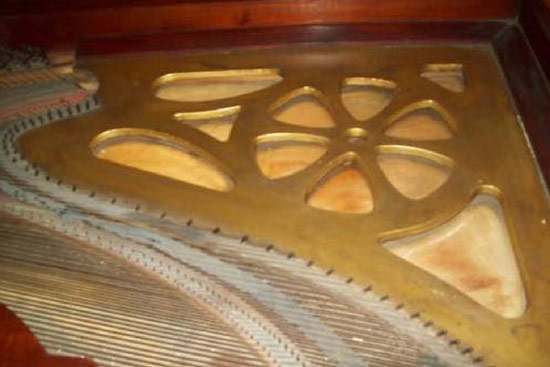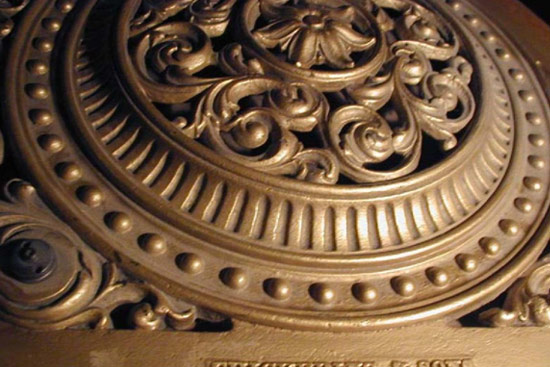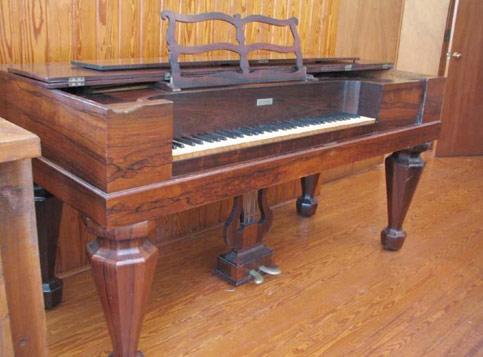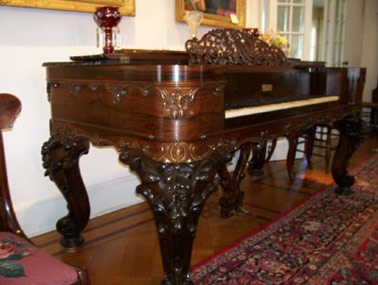Chickering pianos featured a fancy cast string plate in many star and circular ‘crown’ designs, beginning with an early design like a wagon wheel, and culminating in an elaborate fern leaf and floral affair.


The taste in case wood shifted from Santa Domingo and Cuban mahogany which was becoming harder to come by, to rosewood and occasionally walnut, though mahogany continues to appear throughout the 19th C, as in this Adam Stodart square of Feb, 1851.

Growing rapidly after 1860, Steinway and Son rose to prominence with high quality pianos including squares such as those shown below. By the late 1800s there were nearly 1000 piano manufacturers and ‘stencil’ makes available, supplied under whatever name you wanted by firms such as Steck. The most prominent names made grands, squares and uprights, but many companies continued to focus on squares until their demise.

Upright pianos did not begin to gain widespread acceptance until nearly 1880 in America, though production levels were up sharply following the Civil War. The square grand piano was considered the showpiece of the family, and any aspiring middle class worker sought to buy one, even second hand, to display proudly in the parlor. At prices ranging from $260 to $700 for generally acceptable pianos in 1850, they were a years’ wages for a day laborer! By the mid 1880s the square grand had reached its zenith in America. Nearly 7 feet long, 40 inches deep, and weighing in at over 700 pounds, these were massive pieces of furniture. Moving one today we wonder at the magnitude of it all, as with the Mathushek below.

As if mass alone was not enough, in America decoration would also reach its ultimate peak, with name boards dripping in gilt, painted cameos, gemstone and mother of pearl inlay, with mother of pearl keys, as in the (Henry) Miller and Cummings example below!
 |
